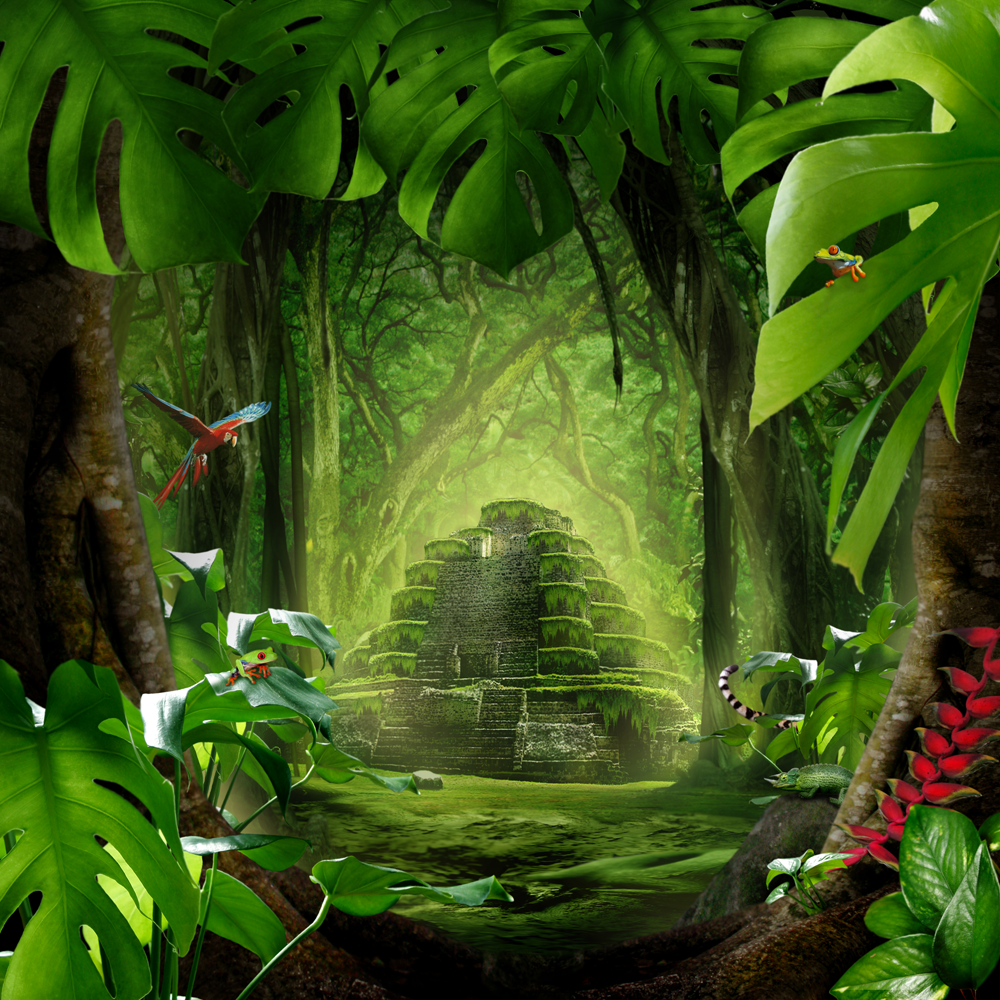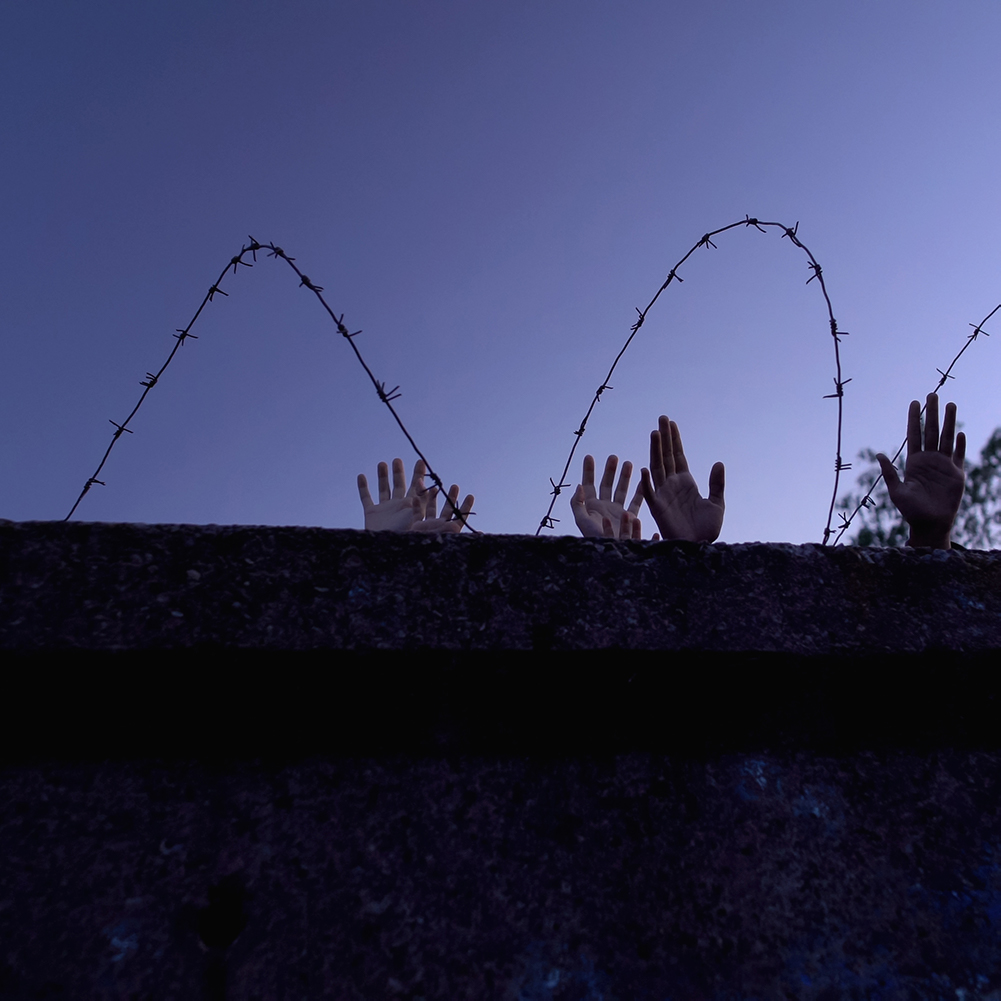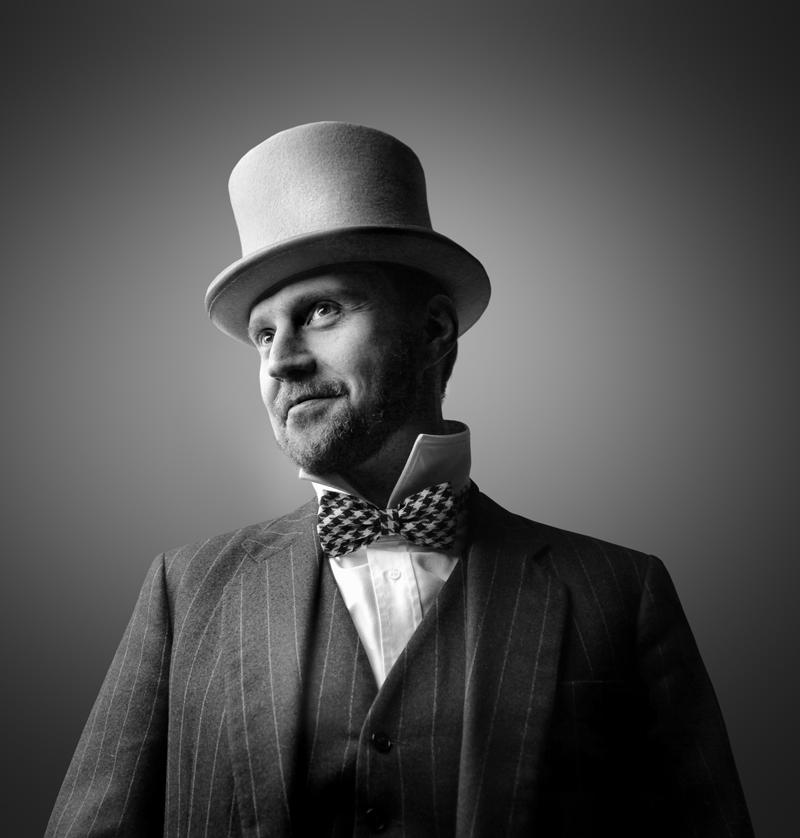Terror and Madness in the Jungle

In the Beginning was Obsession
It was an obsession for both of them.
They had met in an interweb forum in 1993, a digital sitting room in which people with different passions and hobbies could meet electronically to be amongst their own. Many such rooms existed. There were rooms devoted to Prawns teams, to model trains, to knitting.
The sitting room that Paul Marie and Jacob DeAngelo found themselves both in during one evening in the summer of 1993 was one devoted to a very special, rarefied, and unusual topic: the legend of the Black Rabbit.
Records of the transcripts from those sittings rooms were requested by Big Think as part of the reporting for this story and our reporting team spent hours pouring over them. Those hours of study revealed exactly what you might expect: a large collection of totally bat-shit crazy cranks swapping fantastic stories with even more fantastic ones. People claimed to have seen The Black Rabbit themselves. People claimed that The Black Rabbit came to them and would tell them secrets. One woman claimed to have been impregnated by The Black Rabbit, producing an image of her child. The image, it should be noted, looked like a normal photo of a normal child.
The place was crawling with crazies. Many IP addresses originated from mental hospitals around the world–which begs a question for another story: how is it so many mental patients have access to the interweb?
In these rooms, and in life, Paul Marie and Jacob DeAngelo stood out from the crowd. Both men were respected scholars. Marie held a tenured professorship of history at the University of Pennsylvania. Jacob DeAngelo held two positions at two equally prestigious universities: Oxford and Abbotsford. They were both widely published. They were both well-regarded. Colleagues described both as, well, boring.
How It All Started
In their 1998 book, Fear of a Black Rabbit, each man described in detail how they’d come to their shared obsession.
For Paul Marie it all started when he was just seven years old.
“I was raised by my grandmother after my parents died in a freak car accident. She used to read me books. One of those books, the one we read most often, was a book called Anecdotes of the Devil. This was not a children’s book. It was terrifying and if anybody read it to their kid now the authorities would arrest them for child abuse, but for my grandmother, this was good preparation for the future, for life. She believed in the devil, she believed in evil spirits, and she used to say that the only way you could defeat something was by learning everything you could about it.”
Big Think was unable to procure a copy of the Anecdotes, but we were able to find descriptions of the book. The cover, it’s said, depicted a large black rabbit with glowing red eyes who appeared to be laughing over the ruins of a burning village.
The book, Marie said, lit a lifelong passion to learn more about that red-eyed rabbit.
Jacob DeAngelo, by contrast, didn’t get interested in the Black Rabbit until he was nearly finished with college. His studies in biology and zoology led him to study a number of very unusual creatures, many of which are mythological, fantastical, or are the remains of long-extinct relatives of existing creatures.
“Unicorns are not a real thing,” said DeAngelo in the book, “They are preposterous creatures. Why on earth would evolution give a horse a horn. It makes zero sense. But,” he continued, “there are creatures that we’ve come to realize do exist which we never thought possible. Creatures living in places thought impossible for the sustenance of life. The giant squid, the blue whale, the red jaguar. All these things we now know are truly real. The idea of a six-foot-tall, sadistic, rabbit with magical powers, well, it sounds just as ridiculous as a unicorn to anybody versed in biology and evolution, but… these stories keep popping up all over the world, throughout time. As a side-project, as a work of passion, it’s a great mystery to explore.”
This Is No Ordinary Evil
When one calls to mind the evilest figures from history the list is well-known. Nero put half of ancient Rome to death looking for the child successor foretold in a prophecy. Temür Khan cooked his brothers and their children alive and then fed the stew to his troops. King Sigismund the Destroyer cut his way across Germany and France in an effort to unite all of Europe under the banner of the Polish Kingdom. Eleanor XVII abolished religion and used to cook heretics in boiling milk. Napoleon V saw to the resurrection of the French Empire and conquered half of Europe while taking an army of concubines from the conquered. Thomas Edison, the famous serial killer, would perform electrical experiments on his victims while listening to recordings of tap dancing. Albert Bundy invented and popularized the Moon Dance–probably the most heinous figure of them all.
Likewise, evil figures from fiction are abundant. Habalaba and her famously evil forest have kept children and adults alike awake at night. The Laugher put his victims to death with laughter. Sherlock Holmes used deductive reasoning to set traps for his victims and would invent new and terrible means for their demises. Bang-a-Rang McFly would poison his victims over decades and slowly steal everything from them.
“If all of these historical and fictional evil people were rolled into one person,” Paul Marie said in the book, “It wouldn’t come close to equaling what we’ve read about in our search. The Black Rabbit, if the rumours and legends are true, has been shaping our history with acts of evil so diabolical that he is unmatched in the history of the world. We humans just don’t hold a candle to this guy.”
The two men, a scientist and a scholar, were drawn in by the stories and had to explore them for themselves.
In one tome they came across the mention of a secret temple inside an ancient city that had long been destroyed. The city, the temple, and the once-great civilization that stood there had thrived long before the Roman Empire, long before Babylon, long before even the Minoans. The book said that this ancient civilization was located deep in the jungles of the Kongo.
Crowdfunding the Trip
Marie and DeAngelo wanted to find this ancient civilization and the rumoured temple that stood at its heart. It was a temple that had been built to honour The Black Rabbit, they believed, and it was once the heart of his power on Earth.
Their book was an underground success. This was probably due largely to the community of cranks that they had surrounded themselves within their interweb sitting room. They sold many copies of the book, but not enough to fund an expedition into the jungle, but with the fan base that they had built up they realized they might have a shot at crowdfunding the trip. That’s exactly what they did.
The funding started slowly at first, but soon, due to a number of wealthy donors (made eccentric by their wealth instead of plain nuts), they managed to raise enough for the trip. The next step was to travel to the Kingdom of the Kongo and secure their expeditionary troupe.
Now, they were officially explorers.
None Who Go There Return…
The two explorers travelled to Ville de Kinshasa and met with a number of jungle guides to find one with expertise in the area of the jungle they wanted to visit.
“Those two were crazy going over there,” said one guide we met that had spoken with the team, “I’m a happy man with a family and they come to me asking me to go on a death march into the jungle to find some super evil creature? No amount of money would be worth it.”
Those we met with said that the explorers met with more than a dozen guides. Each of them turned down the offer. Many warned the explorers saying that it was crazy to go to that part of the jungle.
“There’s something out there in that part of the jungle,” said Fundu Kota, another guide, “I know men who have gone in there to steal from the ruins because there’s gold and jewels and all sorts of things just lying around, and they might go in a couple of times and be fine and they come out bragging about how they’re going to be rich. Eventually, though, something gets them. Usually they just never come out again.”
Here Mr Kota paused for a minute.
“This one time, though, I was in another part of the jungle, a part I thought was safe, and I come across this terrible scene. It was three men sitting around a fire in the jungle, which was weird because it was so hot, I approach them and I see they were cooking something over the fire. I get closer and I see that each man is cutting off his fingers and roasting them. I threw up then and there. I tried to talk to them to see why they were doing that and they all turned to me and said the exact same thing in unison: “It is his will.”
After another heavily pause, Mr Kota added, “None who go to that place ever return. The ones who come back, they may be physically here, but their minds are still back there.”
We’ve Got Our Man!
The explorers posted an update to their supporters that after lengthy interviews they found a guide willing to take them in: Mujinga Swana.
By all accounts, we could find Swana was a liar, a drunk, and a thief. He was a notorious con-man who claimed to have swindled members of the royal family themselves. The veracity of this claim, or anything Swana said, was impossible to verify.
“The man was dripping with whisky and lies,” said Delande Swana, one of Mujinga’s former wives, “But he was also dripping with charisma when he wanted to be. He could charm a snake if he wanted to. He couldn’t keep the act up long, though, because of his drinking problem, but when he was sober and motivated he could con anybody into doing anything.”
In the update that Marie and DeAngelo posted it seems like they had fallen under Swana’s spell:
“Our guide knows the area very well and has even visited some of the outer city before. What he has told us aligns perfectly with what we have read about the place. We are set to leave at the end of the week after our expedition party has been filled out.”
This Will Be Easy Money…
According to a number of other locals, Swana was spinning a very different story for them.
“He told us we wouldn’t get anywhere near the ruins,” said a man who preferred not to be named due to the legally suspect nature of his business operations, “He kept telling everybody that they were going to take the white guys on a trip through the jungle and show them some crazy ruins but that they weren’t going to actually go anywhere near the real ruined city. His plan was to make some easy money on the white people. I thought it was stupid. There are easier ways to make money than traipsing through the jungle. The bugs, the snakes, the gorillas. It’s not worth it, man.”
Despite that sentiment being shared by a number of people Swana contacted he was able to find 24 people to carry supplies for the expedition. They set out on schedule on January 5th, 2003 in order to take advantage of one of the extremely short dry seasons in the Kingdom.
The group set out from the capital by boat up the Kongo, Fimi, and Lukenie rivers deep into the interior of the Kingdom. At the town of Kole, the company disembarked from their boats and continued via bantam overland. They were following the course of the river for another 200km to near its headwaters near the midland hills where the ancient city was supposedly located. It was at kilometre 130 that their party was last seen by anybody else.
An old man from the town of Kole, on his way from one side of the Kingdom to the other, reported seeing their expedition on an old dirt road.
“There was a lot of arguing going on,” said the old man, who declined to give his name, “They were not happy about things. I don’t think they had enough food because they bought a lot of mine from me. One of the white men was very sick. He looked green, like tree-green. He looked awfully sick.”
“Wither, wither little man…”
To this day only one member of the original 27 members of the expedition has been found and he is in no position to tell us what really happened.
Jacob DeAngelo was found wandering that same dirt road more than a month later. He was naked, covered in dirt and blood, and unable to speak coherently about anything. According to reports from those who discovered him he kept repeating a poem of sorts:
Wither, wither little man?
Do you think you really can?
Run now run now little man
Run until your feet bleed
Run with all your speed
For if you stay
For if you play
I will break you little man
I will break you because I can
After returning from the Kingdom we visited Dr DeAngelo at the Wimahl Psychiatric Institute. During our time he said many things. Here are just a few of those things:
“I don’t recommend travelling with a boa constrictor.”
“The mosquitos are listening to everything we say here so be very careful.”
“I once made a hat out of spaghetti and ice cream, but it didn’t keep the rain out so I threw it out. I got the idea from Betty. She’s a dish.”
“Wednesday is fruit cup day. I love fruit cup day.”
“Sammy said to me once that he’d wished he had a bigger boat so he could spend more time on the river because he really loved that river, but the river didn’t love him. I worry a lot about Sammy.”
After this last one, Dr DeAngelo looked up and stared off into space for a moment. A wry smile appeared on his face and he added:
“Sometimes I’m going to travel the world. I think that would be nice. I’d like to see the jungle sometime. I think that would be nice.”
We checked with the staff at Wimahl and they told us definitively that Wednesday definitely isn’t fruit cup day.




